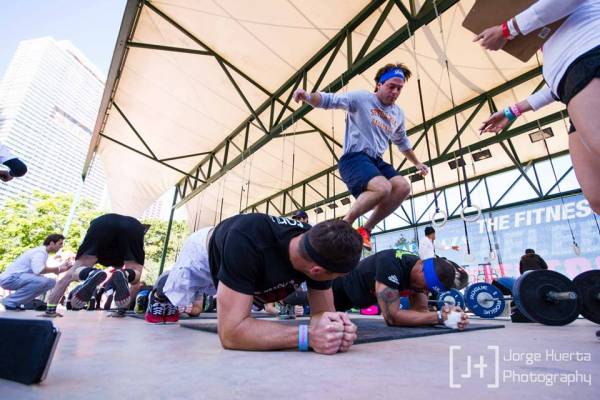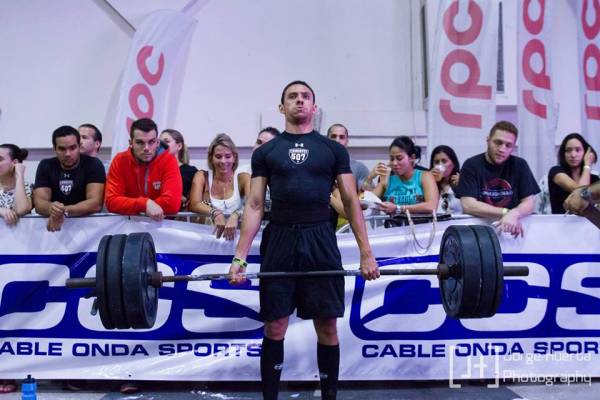It’s time for the wake-up call. If you’re employing high-risk exercises or exercise modes that cannot be validated by peer-reviewed research, it’s time to slam on the brakes and alter your plan.
The Issue of Safety
We are talking training longevity, people. You may be performing exercises and prescriptions that are popular and seem practical. However, certain activities can create havoc on your ligaments, tendons, and muscle tissue due to improper exercise technique.
It’s time for the wake-up call. If you’re employing high-risk exercises or exercise modes that cannot be validated by peer-reviewed research, it’s time to slam on the brakes and alter your plan.
The Issue of Safety
We are talking training longevity, people. You may be performing exercises and prescriptions that are popular and seem practical. However, certain activities can create havoc on your ligaments, tendons, and muscle tissue due to improper exercise technique.
Repetitive yanking, jerking, heaving, and throwing of resistances increases the risk of trauma to these areas. It’s simple physics. Think of it this way: would you rather be in an auto accident at five miles per hour or at 25 miles per hour?
Think of safety as a priority. Is an activity safe over the short term relative to the magnitude of muscle and joint stress created? In example, does an exercise executed in a single training session place an athlete at significant risk unnecessarily? Is it safe over the long term?
For example, although athletes can tolerate the stresses of individual sessions, could repetitive use of the exercise(s) create excessive wear and tear over time that may lead to injury?
Straight-line running drills or controlled-speed strength training exercises have the potential to create injury in some instances. However, common sense dictates that legitimate lower-risk training modes should be implemented rather than riskier modes.
Training-wise, you should minimize ballistic and other joint-compromising exercises and drills in non-sport specific training sessions. This will alleviate the long-term wear and tear on your ligaments, tendons, and surrounding muscle structures.
Two Questions to Ask About Your Exercise or Protocol
Question #1: Is there some risk, but a possible value in the use of this exercise?
Everything has an element of risk. Even looking both directions before crossing a street does not 100% assure you’re safe when commencing the journey. After all, you might miss that bicyclist outside of your peripheral vision.
Should you use necessary training components such as change-of-direction agility drills and sprinting (both plyometric activities themselves), skill sessions that involve person-to-person contact, and drills that entail possible awkward ground contact or pushing off the ground from various positions?
Naturally, these activities must be implemented if you seek specificity of skill development. However, use them with caution relative to their volume and magnitude.
Question #2: Is your pursuit dangerous from the outset and does it possess scientific validation for its use?
Should you use unsubstantiated drills and exercises that are naturally risky over both the short and long term? This would include high-impact depth jumps, resisted (weighted) jumps, and Olympic-style lifts when you’re not a competitive Olympic lifter.
Add to that list any seemingly sensible exercise performed using poor exercise technique such as jerking, bouncing, and yanking, including certain ballistic “functional training” exercises that use additional resistance to purportedly replicate a skill.
The aforementioned should be questioned. Many of those activities have no useful place in a healthy athlete’s program. If their purported benefit can be acquired by using safer means, then they should be eliminated.
Simple Safety Suggestions on What to Use and Lose
Use It:
- Exact individual sport-skill training drills
- Exact team sport-skill training sessions
- Sport-related running and conditioning drills
- Controlled strength-training exercises that minimize unnecessary joint trauma
- Tolerable volumes of all exercises and drills, allowing for proper recovery time
Lose It:
- High-impact joint-compromising exercises and drills that are not skill-specific
- Fatiguing team training sessions that don’t emphasize exact strategy outcomes
- Non-sport specific speed, quickness, and agility training drills that over-stress the body
- Competitive activities such as Olympic lifts and some powerlifting exercise protocols used for the purpose of assisting the average person in their pursuit of weight loss, general strength, and basic fitness
- Any circus-type activities that are impressive, but mostly pointless and potentially hazardous, i.e. exercises performed on a BOSU ball, Swiss ball, balance board, or other unstable surface

The Question of Gray Area Activities
Things that do not fit the strength training, conditioning, or proper skill training categories fall into the gray area category. Repetitive use of gray area activities may offer a nominal benefit, such as endurance (repetitive use + many repetitions + minimal recovery) or muscular strength (the occasional high-tension resistance exercise).
Aside from those potential benefits, most of these activities offer only a minimal benefit that could be gained through using another option. The truth about modern day training is many things that worked in the past still work today. Your training does not need to be popular or gimmicky.
At least one or a combination of the following flaws apply to gray area activities:
- If used as a strength training exercise it can violate the high-muscle tension requirement. Any muscle strengthening activity performed too fast can negatively impact optimal muscle fiber overload.
- If performed as a strength training exercise, it can violate the overload requirement when an overload demand is not applied to the targeted muscles. Anything that does not fatigue the working muscle fibers or an arbitrary number of exercise sets and repetitions that don’t sufficiently create an overload on the targeted system.
- If performed as a strength training exercise, it can violate the progression requirement. Any exercise (not sport-specific) that does not increase the amount of resistance and/or repetitions over a reasonable time period.
- If performed as a strength training exercise, it violates the safety requirement from excessive momentum, increased joint stress, and a greater risk of losing control of the resistance. This can obviously lead to a more injuries.
- If performed as a strength training exercise, it can violate the full range of joint/muscle function requirement. Anything performed over a limited range of joint range of motion.
- If performed as a conditioning exercise, it can violate the overload requirement because it fails to effectively elevate and sustain the heart rate to an optimal level. This would include any exercise performed on a limited basis with sub-standard exercise prescriptions.
- If performed as a conditioning exercise, it can violate the safety requirement due to the excessive muscle/joint forces it creates. An exercise or drill that is high-impact in nature. Plyometric or jump drills performed excessively in circuit fashion with minimal rest between bouts.
- If performed as a “functional training” exercise – that is, something that supposedly replicates a specific athletic skill or gross movement – it can violate the sport-specificity parameters.
- Likewise, if done as an attempt to replicate a specific sport-skill or game situation, it violates the specificity requirement as it does not exactly replicate the skill and/or game situation speed.
New ideas and methods are fine, provided they lead to proven and measurable gains that can augment athletic performance potential.
Although some of the latest fads are relatively safe, their purported benefits are questionable due to the lack of supporting research. Proven-to-work, safe strength training exercises, conditioning activities, and exact skill practice should be the rule for the sake of safety and objective measurable results.

Questions to Ask About Your Training Method:
- Do varying research studies reveal mixed results as to its efficacy?
- Is it being promoted by some high-profile fitness person or self-proclaimed expert in the field who’s being compensated for endorsing it?
- Is it being done simply because it is the latest popular trend?
- Was it used by the latest national champion?
- Was it also used by an unsuccessful team, and if so, why did it not help them achieve success?
If your activity is questionable, go back to the initial steps. Can it be classified as strength training, conditioning, or skill training? Is it safe? Could its benefits be obtained via other time-proven methods?
If you don’t come up with the right answers, it should raise a red flag and the training method should be used sparingly, if at all.
In case you missed it:
Training Activities for Athletes: The Logical Steps to Determine Their Value, Part 1
Training Activities for Athletes: The Logical Steps to Determine Their Value, Part 2
Training Activities for Athletes: Skill Training Research and How to Apply It, Part 3
Training Activities for Athletes: The Final Steps to Determine Their Value, Part 5
Photos courtesy of Jorge Huerta Photography.






